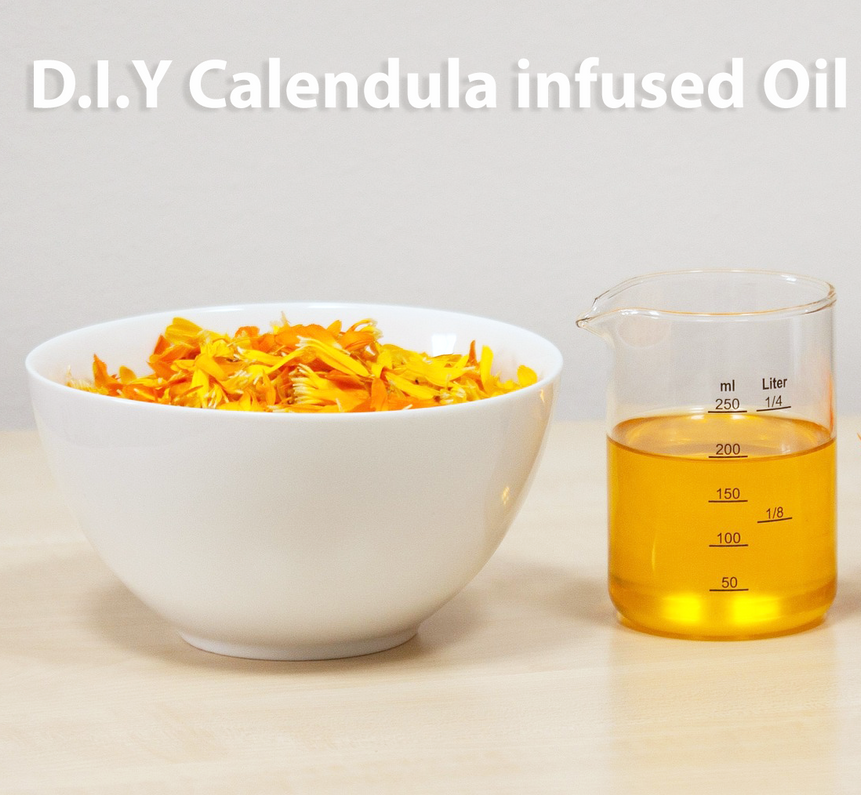How to make your own Calendula (or other herbal) infused Oil
When I was studying Herbal Botany and Manufacturing, one of the first projects I made on my own was a Calendula infused oil. I picked Calendula as my project because of the extensive use of this herb in lotions and balms. I used the infused oil to make a lovely Calendula and Lavender Balm.
Here is a snippet of the report I submitted for my manufacturing project:
Rationale & Evidence
I chose Calendula officinalis and
Lavandula angustifolia as the base for this cream due to the large amount of
evidence showing benefit in topical use for a very wide variety of skin
conditions, making it a well-rounded first aid cream that could be applied in
almost any skin issue that may arise.
Having one cream in the medicine chest that could be used for almost any
skin condition seems to be the most cost effective, space and time efficient
option.
Calendula officinalis has numerous active constituents including Triterpenes, Carotenoids, Essential oil, Flavonoids, Sterols, Mucilage, Resin, Chlorogenic acid and polysaccharides. It also has the vitamins A, C, E and Coenzyme Q10, and minerals Phosphorus and Calcium (Fisher 2009, pp.33-4). I used an infused oil and an infusion of Calendula to extract as many of the active constituents as possible. This gives Calendula a wide range of actions that can be used topically, including Antimicrobial, Anti-inflammatory, Vulnerary, Antihaemorrhagic, Antioxidant, Styptic, Antiseptic, mild Diaphoretic, Circulatory Stimulant, and Immunostimulant (Fisher 2009, pp. 33-4; Braun & Cohen 2015, pp. 136-40).
When used externally, Calendula is indicated for use in many skin problems including minor wounds, inflamed skin conditions, bruises, boils, broken capillaries, chilblains, fungal infections, acne, eczema, sebaceous cysts, sore nipples, sunburn, blepharitis, conjunctivitis, nappy rash, herpes simplex, enlarged or inflamed lymph nodes, and can be used for improving varicose veins as well as in periodontal disease as a mouthwash (Fisher 2009, p. 34). However, because Calendula is part of the Asteraceae family there is also the potential for allergic reactions in about 2% of sensitive people, though it is considered safe by the cosmetic industry (Fisher 2009, p. 34; Boon & Smith 2004, pp. 47-50).
In a randomized comparative trial by Panahi et al. (2011) it was found that an ointment of calendula significantly improved the signs of diaper dermatitis in children without adverse side effects, compared to an Aloe vera cream or chemical based alternatives. Another trial on the prevention of mild to severe radiation-induced dermatitis, showed that calendula ointment is a safe and cost-effective treatment that worked better than the conventional treatment (Pommier et al. 2004). It also has proven wound healing and anti-inflammatory properties as shown in an animal model study by Parente et al. (2011). Fonseca et al. (2010) found that topical application of Calendula had the ability to protect the skin against UV induced damage.
So here is the easy way to make your own herbal infused oil!
Calendula Infused Oil
Formulation
Ingredients
20g dried organic Calendula flowers
200mL organic Coconut Oil (or carrier oil of choice)
Method using heat
Infused Oil Step 1: Grind the Calendula flowers roughly but not too fine.
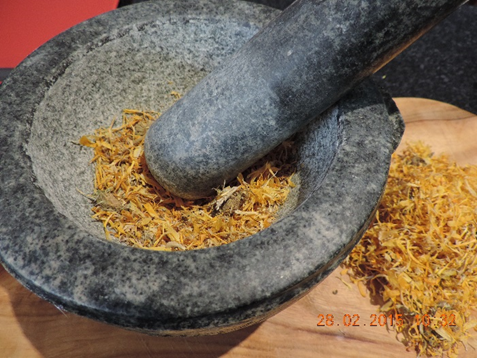
Step 2: Add the flowers and coconut oil to a glass jug or jar with lid off and heat in a 40°C water bath for 4 hours.
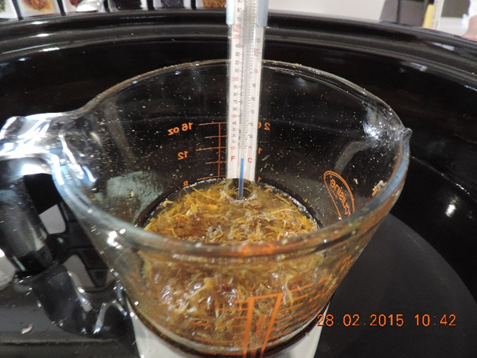
Step 3: Remove from heat and strain oil through muslin into a sealable glass jar and store away from light and heat until ready to use.
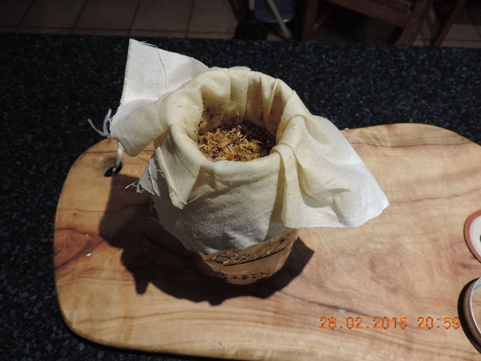
Method using slow infusion
Place your dried herb in a jar that can be sealed airtight
and use enough carrier oil to cover your herb. You may want to squish your herb
down a bit if it is a fluffy one.
Pop the lid on the jar and shake it up, before letting the herb settle back down
into the oil. You may need to tap the jar to get the herb back down and covered
by the oil.
Store your jar in the back of a pantry, out of direct light for four weeks, ensuring
you give it a gentle shake every few days.
Once the four weeks is complete you can strain through muslin into a sealable glass jar and store away from light and heat until ready to use.
___________________________________________
Your infused oil can be used ‘as is’ or you can add it to balm bases or creams or make your own balm or cream!
The easiest way to make your own balm would be to use something like beeswax, which is solid, but can be melted and blended with a carrier oil.
Simply melt your wax over low heat and slowly add your infused oil until you reach the desired consistency when set.
Less oil will result in a more solid product, while more oil will result in a softer product that is easier to smooth off with the tip of your finger.
Enjoy xoxo
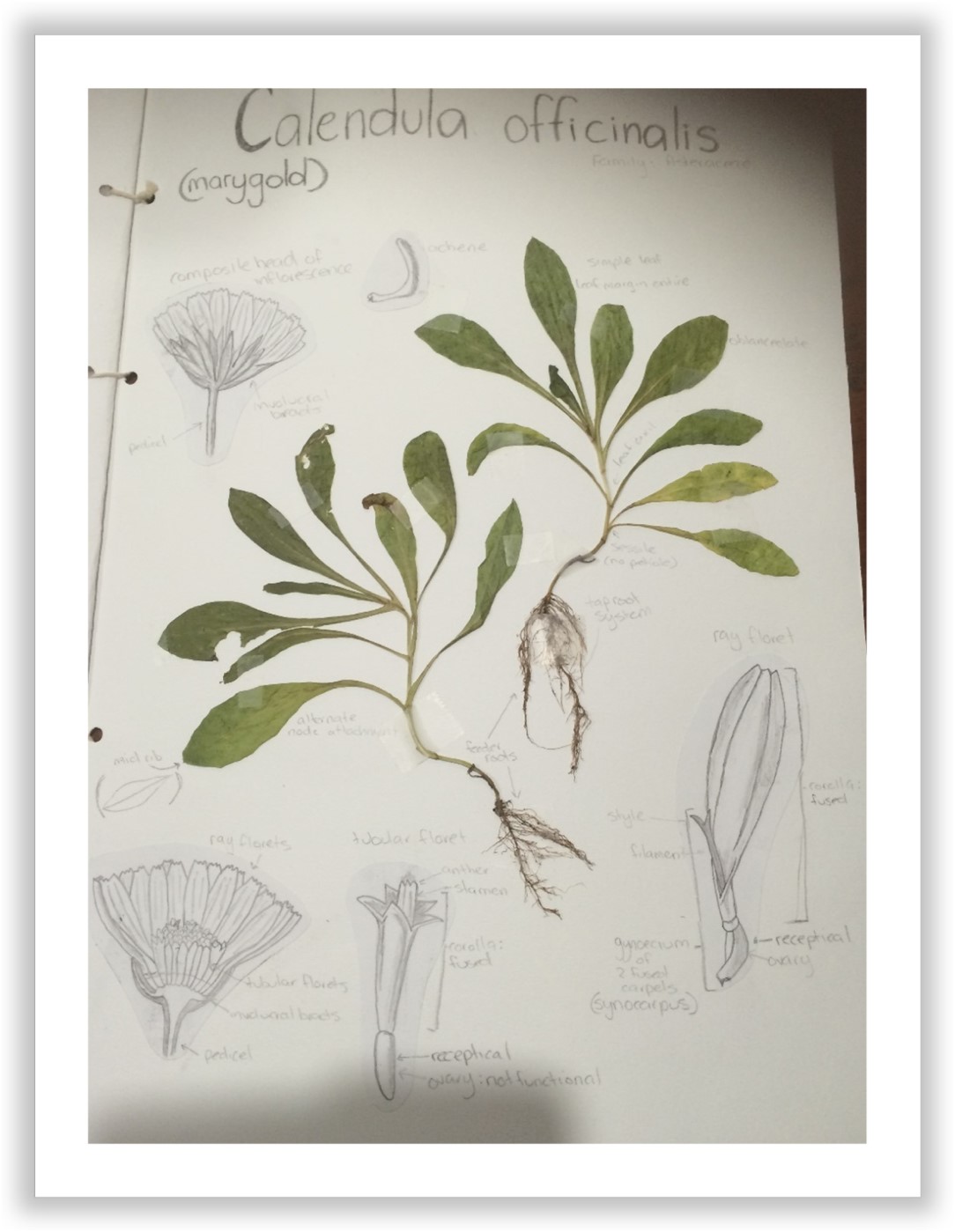
*picture is of my botany project
Recent Posts
-
Natural Remedies for Better Sleep: Top Herbal Teas
In today’s fast-paced world, achieving a good night’s sleep can often feel like an elusi …15th Jul 2025 -
The Benefits of Aromatherapy with Essential Oils: A Natural Path to Wellness
Aromatherapy is a centuries-old practice that uses the power of natural plant extracts, known as ess …8th Jul 2025 -
How to Choose Essential Oils for Beginners: A Simple Guide
How to Choose Essential Oils for Beginners: A Simple Guide Essential oils have become increasingly p …7th Jul 2025

